What is the name of the mixture of orange and tangerine, and what other citrus hybrids exist
Mandarin is one of the most diverse types of citrus fruits. These fruits are characterized by a looser, easily peeled rind and a sweeter flesh than an orange. Mandarin trees are suitable for growing in a variety of climates, unlike other citrus fruits.
But tangerines are smaller and do not differ as keeping quality as oranges... The hybridization of these two citrus fruits produced large, juicy and sweet fruits that combine the best qualities of both crops. From the article you will learn the name of the mixture of orange and tangerine and what other citrus hybrids exist.
The content of the article
Variety of citrus fruits
Evergreen citrus fruits are beautiful during flowering and have dense, rich green leaves.... Therefore, they are often grown for decorative purposes both in the garden and at home.
Three original species of these plants are known: mandarin, pomelo and citron. All other citrus fruits presented today in stores and markets are the result of crossing the original species. Including sweet oranges, lemons and limes that are familiar to us.
Historical reference. The genus Citrus is native to Asia, Melanesia and Australia. Various types of these trees have been cultivated and cultivated by local peoples since ancient times. From here, the plants spread to Micronesia and Polynesia, and then to the Middle East and the Mediterranean region.
The fruits themselves come in a variety of shapes and sizes.... But they are all covered with a skin that differs in density and thickness. Under the layer of zest is a white shell with a bitter taste. The flesh of the vast majority of citrus fruits is juicy, pitted slices.
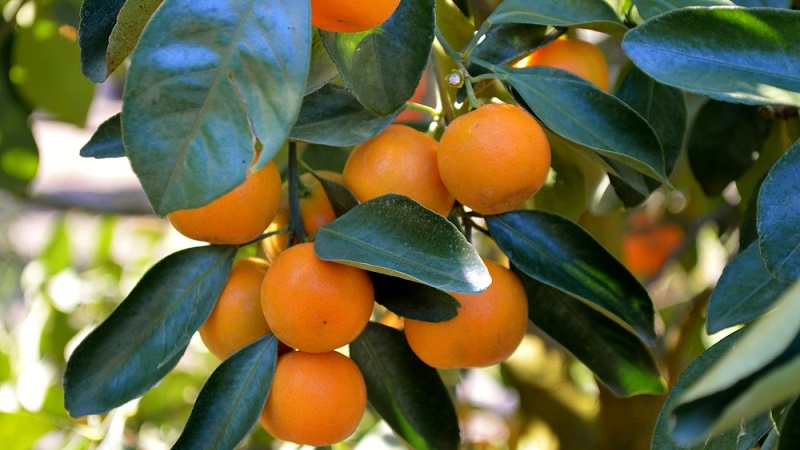
Citrus fruits are prized for their special smell... Its source is the flavonoids and limonoids found in the peel. The genus Citrus is commercially important as it is grown not only for fruit and fresh consumption, but also for juice for conservation.
Citrus trees easily interbreed with each other in natural conditions... For the cultivation of fruit commercially, trees are used that are obtained by grafting the desired varieties onto disease-resistant rhizomes.
Interesting fact!Ripe fruit color depends on the growing region. In the tropics, where there is no winter at all, citrus fruits remain green until maturity, hence the tropical green oranges.
Trees bloom in spring, fruits appear soon after... The fruits ripen in autumn or early winter, depending on the variety. It is at this time that they acquire sweetness. In some species, such as grapefruit, it takes up to 18 months to ripen.
Types of hybrids
As mentioned above, citrus trees easily interbreed with each other. This fact explains the variety of their types. In addition to the usual oranges, tangerines and lemons, exotic fruits are found in supermarketssuch as sweets, tangelo or clementines.
Here is a brief description of the main hybrids, the history of their selection and useful properties.
Tangelo
The fruit with the unusual name tangelo is a hybrid of tangerine (a type of mandarin) and pomelo or grapefruit... Some tangelo varieties appeared by accident, others were specially bred.
Tangelo was brought to America in 1897 by Walter Tennyson Swingle. The hybrid turned out to be so unlike its brothers that it was singled out into a separate class. In particular, tangelo is characterized by increased frost resistance.

The tangelo tree is a large evergreen plant up to 7-8 m high... The size of the fruit ranges from orange to grapefruit. The pulp is yellow or orange, the taste is sweet with a slight sourness. The structure of the peel is loose, it peels off easily. A characteristic feature of the tangelo is the slightly elongated base of the fruit.
The main producers of the hybrid are the US states of Florida and California... These trees are not found in nature, they are cultivated on plantations and in private gardens. Other areas of cultivation are Turkey and Israel.
Beneficial features
Tangelo pulp contains antioxidants, potassium, vitamins A, C and B... It is also high in fiber, which can aid digestion and lower blood sugar levels.
The average weight of one fruit is 100 g, the calorie content is about 70 kcal, which makes tangelo suitable for people who monitor their weight and try not to consume many calories.
Minneola
Minneola is the most widely distributed tangelo variety... This citrus fruit was bred in America (Florida) in the 1930s. The hybrid is a cross between the Duncan grapefruit and the Dancy mandarin.
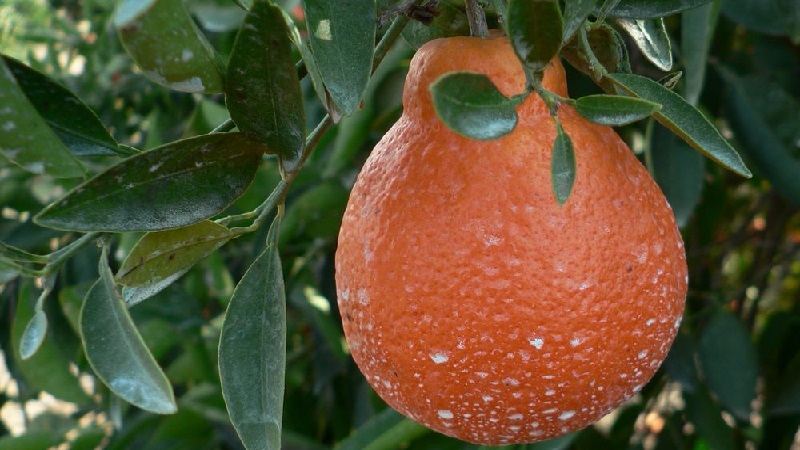
Minneola tree grows up to 5 m in height... The fruit is round with a pronounced neck and smooth red-orange peel. Easy to clean. The fruit taste is rich and juicy, with a hint of astringency of the parent grapefruit.
The nutritional value of minneola is similar to other citrus fruits... The fruits are rich in vitamin C, folate, potassium and fiber. Minneola pulp does not contain seeds or contains a small amount. Therefore, it is a good choice for a lunch box or healthy snack.
In cooking, fruits are used for cooking salads, desserts and cocktails, and as an addition to fish and seafood dishes.
Sweety
Sweetie, or Oroblanko, is a variety derived from a hybrid of white grapefruit and pomelo... Sweetie was bred in the 1960s by American breeders who wanted fruits with the same qualities as grapefruit, but sweeter.
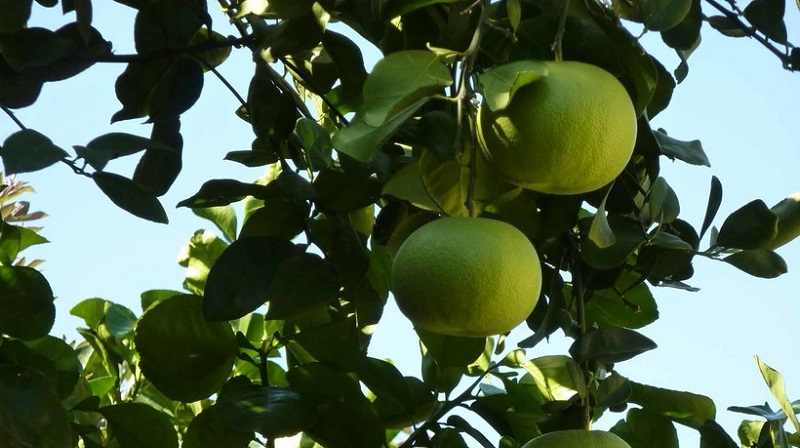
Oval or round fruits look like grapefruit or small pomelo... They weigh from 300 to 1500 g. The pulp, divided into segments, is light, firm, sweet, but with the characteristic bitterness of grapefruit. It tastes like clementine and orange.
Oroblanko flesh dries more slowly thanks to thick partitions between the segmentsthan other citrus fruits. There are no bones. The peel of the fruit is thick, green to yellow, smooth and shiny.
Fruits grow on large evergreen trees 5-9 m high... Plants love warm climates. Today they are grown in South Asia, Europe, parts of Central and South America, Israel and the Hawaiian Islands. The main supplier of fruits is Israel.
Beneficial features
Oroblanco pulp is high in vitamin C, various micronutrients, folic acid, essential oils, B vitamins and enzymes that stimulate the breakdown of proteins and fats.
Also the pulp and skin of the sweets contains the antioxidant naringin, which neutralizes free radicals and helping to protect DNA. And naringin also removes bad cholesterol.
Interesting on the site:
Tangor
Tangor is a hybrid of orange with mandarin (tangerine)... This citrus variety was developed by American breeders in the early 1920s. In Australia and Brazil, it is the second most popular citrus after orange. One of the most famous varieties of tangora is Murcott (which means "honey").
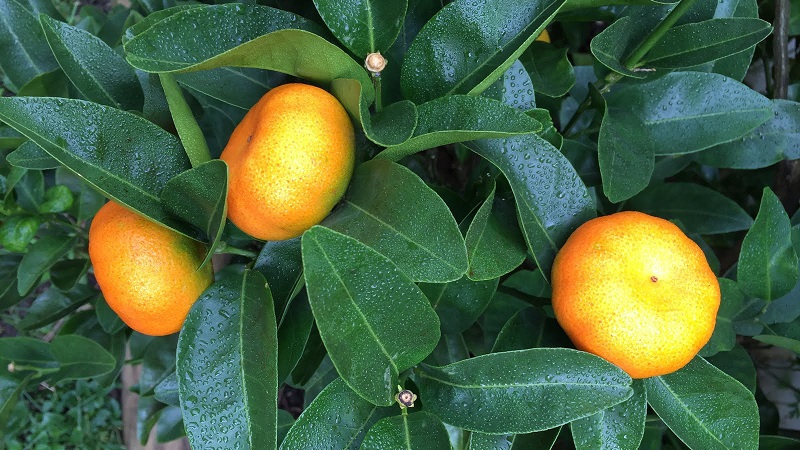
The plant is a tall and wide shrub with overhanging branches and pointed, spear-shaped leaves. Fruits are flattened, medium-sized (4-8 cm in diameter), weighing 70-120 g. The peel is yellow-orange, adheres well to the pulp and does not peel off well. The pulp is juicy, sweet and aromatic.
Regular use of tangors helps to strengthen the immune system, normalizing blood flow, stimulating the production of food enzymes, helps in the fight against colds. The chemical composition of the fruit includes vitamins A, E, C, potassium, phosphorus, magnesium, thiamine, riboflavin.
Clementine
Clementine is a tangor variety, a hybrid of mandarin and sweet orange... The fruit of clementine is dark orange in color with a smooth, glossy skin. The pulp is divided into 7-14 segments. The peel is easy to peel.
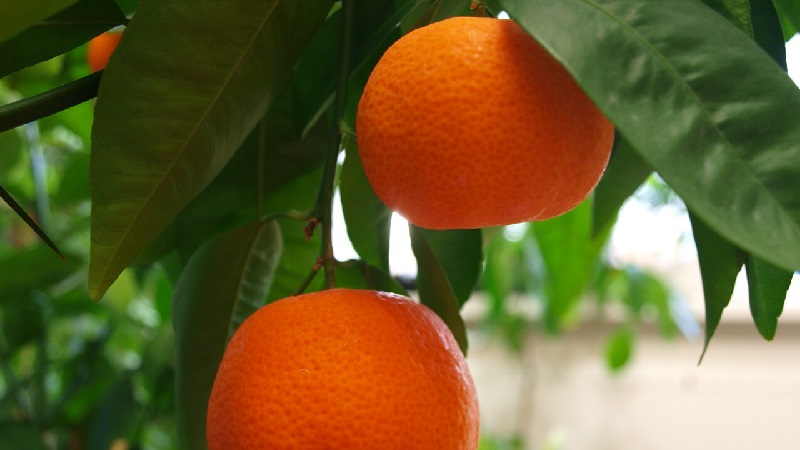
Clementine is a spontaneous citrus hybrid that emerged in the late 19th century in Misserkhin (Algeria) in the garden of the priest Clement Rodier, after whom he was named.
There are three types of clementines: seedless, clementines with a maximum of 10 seeds and Montreal (more than 10 seeds).
The fruits are a rich source of vitamin C and antioxidants... One medium fruit provides 40% of the daily requirement for vitamin C. In addition, clementine contains folate and thiamine. These substances have many functions to support optimal body function, including helping to prevent anemia and promoting a healthy metabolism.
Limandarin
Limandarin, or rangpur, is hybrid of tangerine with lemon... The fruit has a sweet and sour taste, orange peel and pulp. The size of the fruit is about 5 cm in diameter. The rind is thin, easily peeled off.
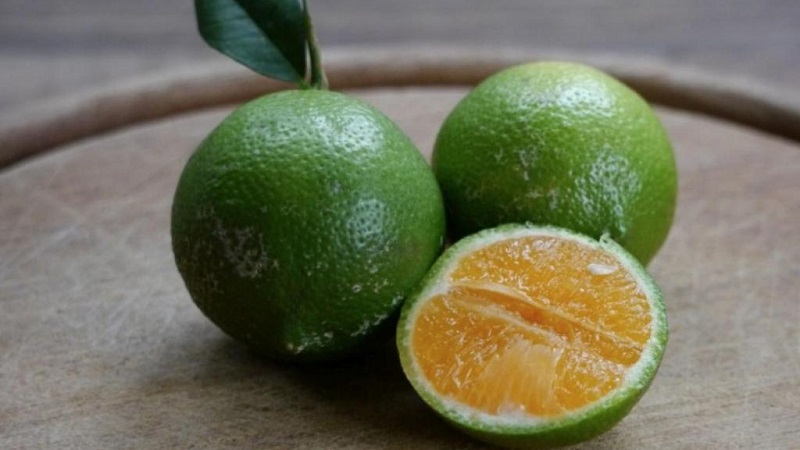
Outwardly, limandarin resembles a small orange, while it has a tangerine aroma. There are no seeds inside the fruit. The pulp tastes sour.
Limandarin fruits are used in cooking to make marmalade. and in canning as well as eaten fresh. Limandarine can be used in place of lime.
Conclusion
Citrus hybrids are prized for their variety and flavor. In addition to these hybrids, there is also a mixture of orange and grapefruit (orange), a hybrid of lemon and orange called Meyer's lemon, a hybrid of lime and kumquat (limequat) and many others.
If mango is considered the king of fruits, then citrus fruits form his royal court. The combination of sweet and sour flavors makes citrus fruits one of the most popular and sought after fruits in the world. All citrus fruits are similar in chemical composition: they are rich in vitamin C, potassium, phosphorus, magnesium and fiber.